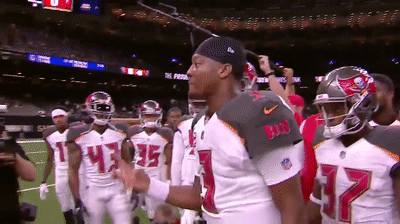The NHL had traditionally covered this for decades fella, giving teams a baseline they typically top up.
Insuring contracts is best practice. As for Poolman going to a floor team, he's LTIR not LTIRetired. No one wants to be caught holding the bag on the off chance he comes back and is ready to play.
Literally the same article i referenced as a quick googling. And if you actually read it, it explains that only a handful of the top contracts make sense to insure.
As for the LTIR vs LTIRetired thing, i guess it's a potential Pearson situation where he attempts a comeback and just sucks really hard. That would absolutely and completely screw over the Canucks. But i don't get the impression that Poolman with his brain injuries is any sort of threat to make that sort of comeback attempt. And good for him honestly. Would be so stupid to try to play again given his TBI history.
Canucks don’t want to pay the price to do so. That’s an easy one.
One article from 15 years and a previous CBA ago is not very convincing.
I mean...it's just a quick googling of what comes up, but that's been my impression of the way the system operates, because i haven't actually seen any more recent articles that supersede that.
He already posted this article.
Also,
NHL Deputy Commissioner Bill Daly said that "typically, a team will extend coverage to as many as seven players."
But it’s an old article and from what I’ve heard all contracts are now insured unless an injury makes them uninsurable.
Where did you hear that though? Is what i'm wondering. Because i'd love to be proven wrong on this, but i simply haven't heard or seen any articles confirming this. And until i actually see some sort of evidence that this is the case, i'm gonna continue to go with the "out of date" information of a tenuously more concrete nature. Which states pretty much the opposite.
I have read that basically all expensive contracts are insured, and "some" of the remaining contracts are. When you think about it, you're made pretty safe without insurance by the sheer quantity of middle-of-road contracts -- there's lots of relatively small contracts on every team, you'll always get injuries here and there, and no single contract of moderate value lost entirely is going to kill you. It also makes sense to insure really big contracts where losing that much money might have cascading effects on your business.
But I don't remember where I read that, it's pretty vague in any case, and there's weirdly little information out there on the subject.
I'd love to also read this. But my problem is...nobody seems to have any actual concrete links or information on the topic.

It was 16 years old so I was reluctant to reference. Thought the fact the league's insurance plan was covering the first 7 years of players contracts as far back as 2008 was interesting.
Ever since Nathan Horton, teams don't mess around with insurance. Leafs insured Clarkson, CBJ didn't with Horton, so it was more appealing to take the Clarkson contract over the Horton one.
To me, that was the most concrete evidence of where contracts are insured vs not. It was a huge talking point and major reason behind the trade. And it was actually publicly and concretely known. So barring more concrete evidence to the contrary...i'm going to continue on with that sort of assumption, for lack of valid counter-evidence.
It's also something that came up in the Voracek and Pronger "trades".
The thing with that article is that you’re both referencing it to prove your points and to me, it’s too old to be of relevance.
I mean it's old...but if there isn't more recent evidence of major changes and shifts in the process, is it irrelevant? Or is it the most relevant information we've got?


